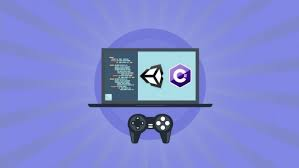Mastering the Art of Beat Them Up Controllers in Unity: A Comprehensive Guide
Introduction:
Welcome, fellow game developers and Unity enthusiasts, to another exciting journey into game development. Today, we're delving deep into the fascinating world of beat-them-up controllers in Unity. You're in the right place if you've ever dreamed of creating your own action-packed, adrenaline-pumping, beat-them-up game.
Beat Them Up Games: A Brief Overview.
Beat them up games, also known as brawlers, have been a staple in the gaming industry for decades. The genre has evolved from classic titles like Street Fighter and Double Dragon to modern gems like Streets of Rage 4, but its essence remains the same – intense, one-on-one combat that keeps players on the edge of their seats.
In Unity, the development of beat-them-up controllers involves a combination of player input, character animations, and a robust combat system. In this comprehensive guide, we'll break down the key elements you need to create a seamless and engaging beat-them-up experience.
Setting Up the Project:
Before we dive into the nitty-gritty details of beat-them-up controllers, let's start by setting up our Unity project. Open Unity and make a new 2D project. Ensure you have the assets to bring your Beat them-up world to life, including character sprites, backgrounds, and sound effects.
Importing Character Sprites:
Choose or create a dynamic, visually appealing character for your beat-themed game. Import the character sprites into Unity and set up the animations. A well-animated character is crucial for conveying the impact of each punch, kick, and exceptional move.
Creating Player Input:
Unity provides a versatile input system that allows you to capture player commands efficiently. Set up your input manager to recognize commands like punch, kick, jump, and special moves. Use Unity's Input System package for a more modern and flexible input solution.
Implementing Basic Movement:
Before tackling combat mechanics, let's focus on basic character movement. Write a simple script to handle player input and move the character left, right, up, and down. Ensure the character responds smoothly to user commands, creating a solid foundation for the beat-them-up gameplay.
Developing Combat Mechanics:
Now comes the heart of the matter – combat mechanics. A robust beat 'em-up controller requires an intricate system to handle attacks, combos, and defensive maneuvers. Here's a step-by-step guide to implementing these mechanics:
- Basic Attacks:
- Define basic attack animations and link them to the corresponding input commands. Use Unity's Animator Controller to transition seamlessly between idle, walking, and attacking states.
- Combos: Elevate your beat-them-up game by implementing combo systems. Design a combo system that allows players to combine various attacks for devastating combinations. Consider incorporating visual and auditory feedback to enhance the sense of impact.
- Special Moves: Introduce special moves to add depth to your combat system. Design unique animations and effects for each move, making them powerful tools in the player's arsenal. Implement a cooldown system to balance the use of special moves.
- Blocking and Dodging: Remember defensive maneuvers. Implement a blocking and dodging system to enable players to evade attacks strategically. Balance the defensive mechanics to prevent players from relying solely on offense.
- Health and Damage: Create a health system to track player and enemy health. Define damage values for each attack and establish rules for calculating and applying damage. Implement visual cues, such as screen shakes or flashing sprites, to indicate successful hits.
Testing and Iterating:
With the primary beat-them-up controller in place, it's time to playtest your game extensively. Solicit feedback from others, identify areas for improvement, and iterate on your design. Adjust animations, tweak attack timings, and refine the overall feel of the combat until it's both challenging and satisfying.
Polishing the User Interface:
A polished user interface (UI) is essential for a complete gaming experience. Design health bars, combo counters, and other relevant UI elements to inform players about their progress. Ensure that the UI seamlessly integrates with the overall visual style of your beat-them-up game.
Adding Sound and Music:
Sound effects and music are the unsung heroes of game development. Find or create impactful sound effects for punches, kicks, and special moves. Select a soundtrack that complements the intensity of the combat. Use audio cues to enhance the player's connection to the game world.
Optimizing for Performance:
As your Beat them-up game takes shape, consider performance optimization. Streamline code, minimize unnecessary calculations, and use Unity's profiler to identify and address performance bottlenecks. A smooth, responsive game is crucial for an immersive player experience.
- Enemy AI: Implementing intelligent enemy AI is crucial for creating challenging and dynamic gameplay. Develop enemy behavior patterns, such as aggression, retreat, and flanking. Vary the difficulty by introducing different types of enemies with unique attack styles and vulnerabilities.
- Environmental Interactions: Elevate your beat-them-up experience by adding interactive elements within the game environment. Introduce objects that players can use as weapons, obstacles to navigate, or areas that trigger environmental hazards. This adds a layer of strategy to the gameplay.
- Power-ups and Items: Spice up the gameplay by incorporating power-ups and items. Create pickups that temporarily enhance the player's abilities, like increased speed, damage boost, or health regeneration. Experiment with different power-ups to discover which best complements your game's pace.
- Camera Dynamics: Please pay careful attention to the camera system to ensure it follows the action smoothly. Play with different camera angles and perspectives to find the most engaging view. Implement camera shakes during impactful moments, enhancing the feeling of intensity during combat.
- Dynamic Level Design: Craft levels that are not just backgrounds but interactive arenas. Design levels with multiple layers, platforms, and varying elevations to encourage active movement. Incorporate interactive elements within the level, such as destructible objects or platforms that affect the flow of combat.
- Tutorial and Onboarding: Create a tutorial or onboarding sequence to introduce players to the game mechanics. Teach them basic controls, combos, and special moves gradually. Use visual cues and prompts to guide players without overwhelming them.
- Multiplayer Support: Consider adding multiplayer support to allow friends or online players to join forces or compete against each other. Implement synchronization mechanisms to ensure smooth multiplayer gameplay. This adds replayability and social engagement to your beat-them-up game.
- Art Style and Visual Effects: Define a consistent art style that complements the fast-paced action of a beat 'em-up game. Experiment with visual effects to make attacks and special moves visually stunning. Use particle systems for hits, dynamic lighting for impactful moments, and screen filters to enhance the overall aesthetic.
- Accessibility Features: Ensure your game is accessible to a broad audience by incorporating features like adjustable difficulty levels, customizable controls, and options for colorblind players. Accessibility features make your game more inclusive and increase its appeal.
- Scoring and Leaderboards: Implement a scoring system to track player performance. Reward players for executing combos, defeating enemies efficiently, and completing levels quickly. Integrate leaderboards to encourage competition among players and foster a sense of achievement.
- Post-Release Support: Game development doesn't end with the release. Plan for post-release support by addressing player feedback, fixing bugs, and adding new content. Regular updates keep your player community engaged and show your commitment to the game.
- Marketing and Community Building: Develop a marketing strategy to promote your Beat Them Up game. Create engaging trailers, social media content, and promotional materials. Build a community around your game through blogs, social media groups, and live-streaming platforms to generate excitement and anticipation.
- Playtesting with Diverse Audiences: Conduct playtests with diverse players to gather feedback from different perspectives. This helps identify potential issues and ensures your game resonates with a broader audience.
Conclusion:
Congratulations! You've now mastered the art of creating beat-them-up controllers in Unity. From setting up the project to implementing complex combat mechanics, you've gained the skills to craft an engaging and dynamic beat '''em-up game. Remember, game development is an iterative process, so continue refining and enhancing your project to create a memorable gaming experience for players worldwide. Now, unleash your creative energy into the world of beat-them-up games!
For more topics, see https://bleedingedge.studio/blog/

.png)
.jpg)

Comments
Post a Comment